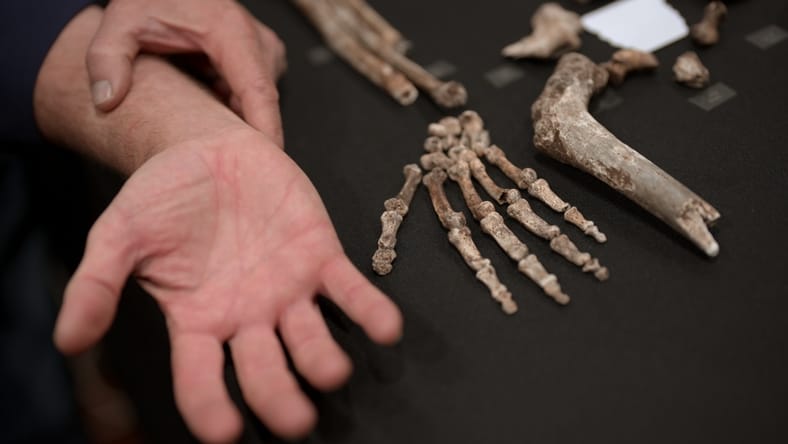
Scientific findings about an ancient humanoid species called Homo naledi discussed in Netflix new Unknown: Cave of Bones documentary are kicking up a heated debate in the scientific community.
A team of experts led by paleoanthropologist Lee Berger has been excavating the ancient remains of Homo naledi inside the Rising Star cave system in South Africa since their discovery in 2013.
Questions Raised About Homo naledi in Unknown: Cave of Bones
In a scientific paper published in June that has not yet been peer-reviewed, Berger and his team argue that his team has found evidence that Homo naledi, a species of early, ape-like humans who lived between 236,000 and 335,000 years ago, were intelligent enough to bury their dead, make tools, and carve art into the caves’ walls — despite having brains just slightly bigger than an orange, like the chimpanzee.
For context, the earliest evidence of modern human burials dates back to Israel about 100,00 years ago. So if Homo naledi really was as bright as Berger and his team believe, that means they were burying their dead more than 100,000 years before us, despite their brains being a third of the size of ours.
Also Read: 1946 Doc Argues Bible References to Homosexuality Are Mistranslations
It would raise many questions about human evolution — which was previously believed to have evolved higher intelligence as the size of our brains expanded — so the idea that a brain as small as Homo naledi’s could be that sophisticated would be an earth-shattering realization. That’s why some peer reviewers are calling for more evidence to prove the findings are accurate.
“I have no issue with the idea that non-Homo sapiens species disposed of their dead, but I do have an expectation that there is robust scientific evidence to support such statements before scientists go on massive media campaigns regarding these ideas,” palaeoanthropologist Andy Herries of La Trobe University in Melbourne, Australia told The Guardian.
Professor Chris Stringer of the Natural History Museum, London argues that Berger’s team may have exaggerated their findings.
“Rising Star is such a great site and the naledi material is so wonderful that there was really no need to over-egg the pudding,” he told The Guardian “It’s going to cause problems of credibility in future, which may even affect funding for more work.”
But Berger is sticking to his guns.
“We haven’t stopped working in the chamber, and more evidence is coming,” he told the outlet. “We will continue to present more evidence and we will keep these criticisms under our belts but I will say to those critics who demand more evidence: we will deliver that evidence, so be careful what you wish for.”
Unknown: Cave of Bones is now streaming on Netflix.
Main Image: Unknown: Cave of Bones – Production Still Image courtesy of Netflix
Share:

